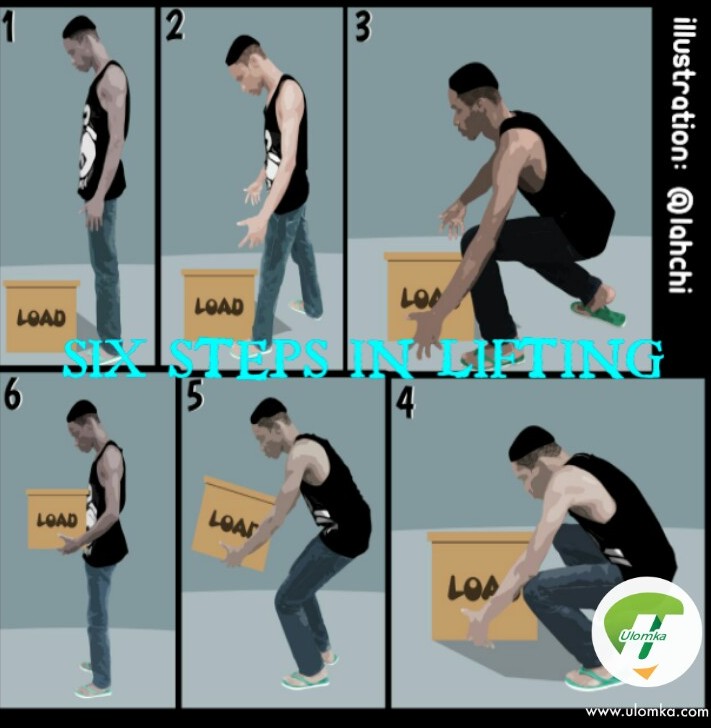One of the factors leading to back pain and other Work related upper limb disorders (WRULDs) is poor lifting techniques. We need to know how to lift safely whether we lift as a source of livelihood or just lift things from time to time at work or at home. Ladies, we know you love those tote bags but carrying too much stuff in them is risky to your overall well-being as too much load on one shoulder or under one arm, creates uneven pressure on the spine. Reduce the content of handbags.
Poor lifting could lead to back sprains and strains, cuts, muscle pulls, wrist injuries, elbow injuries, hernias, fractures and spinal injuries. Most times, effects are not immediate but over time, health complications arise. Therefore, it’s important to introduce machines, lifting devices and get help when the load is beyond one’s capability.
There are 4 important considerations in lifting:
• Task: assess the actual lifting process to ascertain that the task has been properly designed and thought through
• Individual: assess the physical capability of the people to be engaged in the task (this is why physical strength and stamina are factors when employing loaders, bouncers)
• Load: assess the size, shape, content, temperature of load to be carried. This is important because it determines how the load can be carried safely. We definitely cannot carry a big pot of boiling water the way we would carry a cold one.
• Environment: assess the immediate vicinity where the lifting would take place in order to make better decisions. Check for obstruction, the floors, lighting, temperature
Six Steps to Lift Correctly
• Size up the load
• Spread feet apart with one foot slightly in front of the other for balance
• Squat and maintain an upright posture, no slouching
• Grip the base of the load firmly
• Lift with your legs not your back. Rise up slowly with the load
• Hold load close to your body

Tips to note
DOs
• Always think before commencing the process
• Make sure there is a ready location to drop the load before commencement of lifting
• Move in small steps and change direction with your feet not your body
• Lower load in the reverse procedure for lifting
• Always put on appropriate footwear
• If the load is too big for you, reduce size or get help and work in sync with your partner
• If necessary wear appropriate Personal Protective Equipment (PPE) gloves, coverall etc.
• As much as possible, introduce machines and lifting devices for heavy load

DON’Ts
• Do not lift by bending forward, it could damage your back
• Do not twist your body when lifting or carrying load
• Do not use the load to block your view
• Do not lift heavy loads above shoulder level
Practice they say makes perfect, if we keep making a conscious effort, it becomes a part of us.
Happy future lifting!



